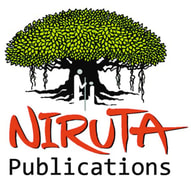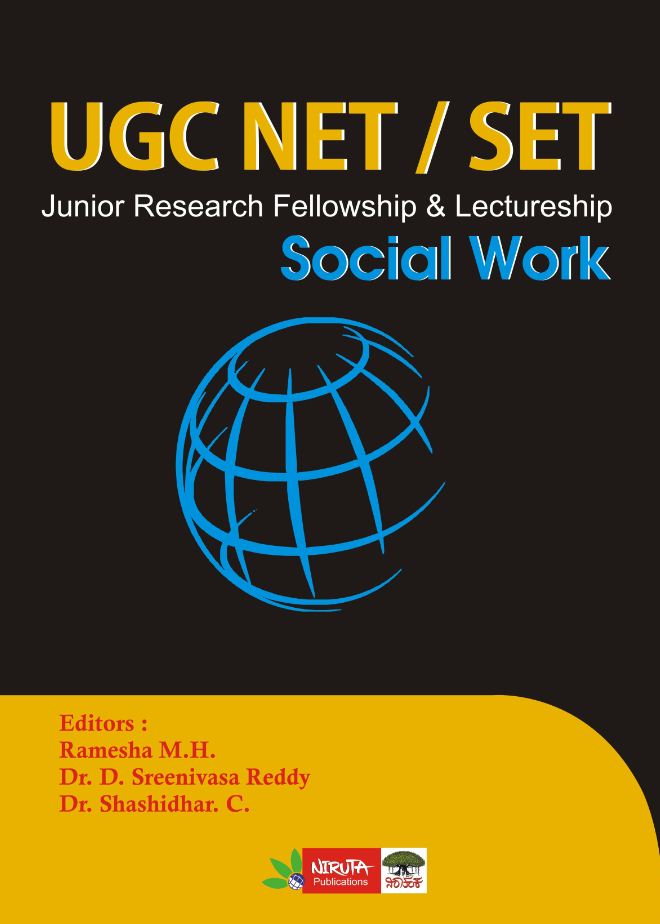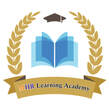|
Note : This paper contains fifty (50) objective type questions of two (2) marks each. All questions are compulsory. 1. The Life Model (Ecological) of social work practice is best associated with (A) Walter Friedlander (B) Mary Richmond (C) Carel B. Germain (D) Florence Hollis 2. Sum of the deviations of all the values of X from the Mean is (A) Minimum (B) Zero (C) Maximum (D) One 3. Contradictory demands of the same role is termed as
(A) Role strain (B) Role playing (C) Role conflict (D) Role twisting 4. Dementia is a (A) Neuro-Psychiatric problem (B) Mental health problem (C) Dermatological problem (D) Cardio-vascular problem 5. Social activist and Magasaysay award winner Mr. Deep Joshi is best associated with (A) Tribal Welfare (B) Child Welfare (C) Family Welfare (D) Youth Welfare 6. To evaluate another culture according to the standards of one’s own culture is (A) Material culture (B) Ethnocentrism (C) Non-material culture (D) Xenocentrism 7. Which of the following are the characteristic features of an urban community ? I. Large size II. Preponderous of voluntary organisations III. Anonymity IV. Preponderous of secondary and tertiary occupations Codes : (A) II & IV only (B) I & III only (C) I, III & IV only (D) I, II, III & IV 8. Which one is not the assumption of social case work ? (A) Every human being is to be respected (B) Every human being can change (C) Every human being has some work (D) Every human being is an artist 9. Which is not a correct statement about lay-off as per Industrial Disputes Act, 1947 ? (A) Lay-off is refusal to give employment. (B) Lay-off may be due to break-down of machinery. (C) Lay-off may be due to a natural calamity. (D) For lay-off, an employee need not be on the muster-rolls. 10.According to Durkheim “Human agency” is constrained by (A) Political process (B) Social structure (C) Economic resources (D) Agency of other actors 11.Reproductive and Child Health Programme (RCH) in India was launched in year (A) 1997 (B) 2001 (C) 2003 (D) 2006 12.The notion that men are stronger than women is a (A) Sanction (B) Value (C) Norm (D) Belief 13.Voluntary reference of disputes to arbitration is dealt in under which section of the Industrial Disputes Act, 1947 ? (A) Section 9 (B) Section 10 (C) Section 10-A (D) Section 11 14.GDI stands for ……………………. (A) Growth Development Index (B) Gender Development Index (C) Growth related Development Index (D) Gender related Development Index 15. The Rational-Emotive Therapy is best associated with (A) Eric Berne (B) William Glasser (C) Albert Ellis (D) Gordon Hamilton 16.Which of the following is not a correct match ? (A) Functional Model – Jessie Taft (B) Problem-solving Model – H.H. Perlman (C) Client-centered Therapy– Carl Rogers (D) Reality Therapy – William J. Reid 17.Which of the following is not a theory of labour welfare ? (A) Religious Theory (B) Trusteeship Theory (C) Policing Theory (D) Distributive Theory 18.Adult literacy and combination of primary, secondary and tertiary enrolment are the dimensions of ________. (A) Life longevity (B) Knowledge (C) Standard of living (D) Social harmony 19.Under which of the following articles of the Constitution of India does the state provide equal justice and free legal aid ? (A) Article 38 (B) Article 39 (C) Article 39-A (D) Article 41 20.The Right to Information Act was passed in the year _________. (A) 2004 (B) 2005 (C) 2006 (D) 2003 21.Freud suggested that mind is composed of _________. (A) Thoughts (B) Feelings (C) Instincts (D) All the above 22.As per the William Beveridge Report 1941, which were the “Giant Evils” in society of England ? I. Squalor and Ignorance II. Want, Idleness and Disease III. Idleness, Disease and Poverty IV. Poverty, Unemployment and Squalor Codes : (A) I, III only (B) I, II only (C) I, IV only (D) I only 23.Which one of the following is not a part of the Directive Principles of the State Policy ? (A) Panchayats (B) Weaker sections (C) Law and order (D) Animal husbandry 24.Who among the following is associated with ‘Bachpan Bachao Andolan’ ? (A) Medha Patkar (B) Kailash Satyarthi (C) Sunitha Narayan (D) Maneka Gandhi 25.Which among the following Indian States has conducted the Panchayat elections first in the country after the 73rd Amendment Act ? I. Tamil Nadu II. Karnataka III. Haryana IV. Punjab Codes : (A) I only (B) I and II only (C) I, II and III only (D) III and IV only 26.Which among the following statements is not correct ? (A) SSA seeks to provide quality elementary education. (B) SSA seeks to open new schools in places which do not have schools. (C) SSA addresses the needs of 192 million children of India. (D) SSA inter alia focuses on adult education. 27.Which among the following statements is not correct with regard to 73rd Constitutional Amendments ? I. Regular elections to Panchayats every 3 years II. Reservation of not less than 33% for women. III. Constitution of a State Finance Commission to help Panchayats. IV. Proportionate seat reservation for SC and ST. Codes : (A) I and II only are correct. (B) I, II and III are correct. (C) II, III and IV are correct. (D) All are correct. 28.Which of the following are the attributes of a profession ? I. Recognition by the society II. Profiteering III. Formal agreement with the state IV. Controlled entry Codes : (A) I and IV only (B) I, III and IV only (C) II, III and IV only (D) I, II, III, IV 29.Which among the following is correct ? I. The maximum gratuity payable to an employee is Rs. 10 lakhs. II. The wage ceiling for the coverage of EPF Act is Rs. 15,000. III. A conciliation officer is empowered to pass an award under Industrial Disputes Act. IV. Registration of a Trade Union is compulsory to get it recognised by the employer. Codes : (A) I and II only are correct. (B) I, II and III are correct. (C) I, II and IV are correct (D) All are correct. 30. The observation made without involving extrinsic and intrinsic variables is (A) Participant observation (B) Non-participant observation (C) Controlled observation (D) Uncontrolled observation 31................... is a violation of contextual, cultural or social norms. (A) Rebellion (B) Ritualism (C) Dyad (D) Deviance 32.__________ is the study and review of past operating experience. (A) Recording (B) Accountability (C) Monitoring (D) Evaluation 33. ……………………assesses the likely turnover in key posts and identifies suitable candidates to fill these posts in future. (A) Manpower planning (B) Succession planning (C) Turnover (D) None of the above 34.Assertion (A) : Social policy is necessarily concerned with the promotion of social development. Reason (R) : Social policy is the planned intervention to improve existing social system. Choose your answer from the codes given below : Codes : (A) Both (A) and (R) are correct and (R) is the correct explanation of (A) (B) Both (A) and (R) are not correct. (C) Both (A) and (R) are correct, but (R) is not the correct explanation of (A). (D) (A) is correct, but (R) is not the correct explanation of (A). 35.Assertion (A) : Neo-liberal states believe in the minimum intervention by government. Reason (R) : Scandinavian countries can be seen as the best example of a welfare state. Codes : (A) (A) is true, but (R) is false. (B) (A) is false, but (R) is true. (C) Both (A) and (R) are correct. (D) Both (A) and (R) are wrong. 36.Assertion (A) : Trust is crucial to the relationship between a professional and a client. Reason (R): Trust in a relationship can act as a catalyst for behavioural change. Codes : (A) (A) is true and (R) is false. (B) (A) is false and (R) is true. (C) Both (A) and (R) are true and (R) is the correct explanation for (A). (D) Both (A) and (R) are true and (R) is not the correct explanation for (A). 37.Assertion (A) : Social workers are imparting training in soft skills to the police personnel. Reason (R) : Social workers are trained in basic values of justice, equality and respecting human dignity which render them appropriate for imparting training in soft skills. Codes : (A) (A) is false and (R) is true. (B) (A) is true and (R) is false. (C) Both (A) and (R) are true, but (R) is not the correct explanation of (A). (D) Both (A) and (R) are true and (R) is the correct explanation for (A). 38.Which of the following is not a correct match ? (A) Mohammad Yunus – Grameen Bank (B) Amartya Sen – Welfare Economics (C) Verghese Kurien – Sampoorna Kranti (D) Mahatma Gandhi – Swadeshi 39.Match the List – I with List – II and choose the correct answer from the codes given below : List – I List – II (Name of the Author) (Title of the Book) a. A. Kadusin i. Principles of Social Case Work b. T. Biestek ii. Child Welfare Services c. Grace Mathew iii. Introduction to Social Case Work d. S.K. Khinduka iv. Working with Communities Codes : a b c d (A) ii i iii iv (B) i ii iii iv (C) iv i ii iii (D) iii ii i iv 40.Match the List – I with List – II and choose the correct answer from the codes given below : List – I List – II a. CARA i. Morphostatic properties b. Family ii. Alzheimer c. Dementia iii. Child d. Creche iv. Adoption Codes : a b c d (A) iv i ii iii (B) i ii iii iv (C) iv iii ii i (D) ii iv iii i 41.Match the List – I with List – II and choose the correct answer from the codes given below : List – I List – II a. MADA i. Rural Housing b. Step up ii. Rural Connectivity c. PMGSY iii. Urban Development d. IAY iv. Tribal Development Codes : a b c d (A) iv iii ii i (B) iii iv i ii (C) ii i iv iii (D) i ii iii iv 42.Match the following : List – I List – II a. Probative Department i. Rehabilitation of Offender b. Parole ii. Juvenile Justice c. Vocational Training iii. District Court d. Child Welfare Committee iv. Reward for good conduct Codes : a b c d (A) i ii iii iv (B) iii iv i ii (C) iv i ii iii (D) ii iii iv i 43.Arrange the following Acts in a chronological order of their enactment : I. Plantation Labour Act II. Payment of Bonus Act III. Payment of Wages Act IV. Motor Transport Workers Act Codes : (A) I II III IV (B) IV III II I (C) III I IV II (D) II IV III I 44.M.G. Ross has described four major roles of a worker in community organisation. Which of the following are those roles ? Choose the appropriate code. I. Leader and Educator II. Social Therapist and Expert III. Guide and Enabler IV. Social Reformer and Mediator Codes : (A) I and IV only (B) II and III only (C) I and III only (D) III and IV only 45.Arrange the following in sequence in context of history of social work in West : I. Poor laws II. Appointment of overseers of the poor III. The Beveridge Report IV. Friendly visitors Codes : (A) I, II, III, IV (B) IV, II, I, III (C) I, II, IV, III (D) III, II, I, IV Read the passage given below and answer the following questions as per the understanding of the passage : (Que. Nos. 46 to 50) Field work in social work education refers to training and education. The training is repetitive and skill-oriented and education is imparted with broad perspectives. It is a dynamic process of observing, amassing and implementing creative and innovative ideas. Field work is considered to be learning through doing. Field work programme provides an opportunity to students to apply their theoretical knowledge taught in the classroom appropriately in different practical situations. It is a way to transform knowledge through certain skills and techniques into action. In social work education, the extension and well planned field work programme is inevitable. It is evident that field work varies in quality and quantity in various institutions. It is imparted under supervision and guidance of trained and experience person(s) in social work. It can be said that theory without practice is empty and practice without theory is meaningless. The field work programme of schools of social work education is the most important and integral part of social work education. Although field work is the most important element in social work education but some schools of social work have failed to develop field work programmes well. While classroom teaching has developed well, we have unconsciously created a greater gap between theory and field work instruction, by failing to develop the latter also to a corresponding level. Agency based field work utterly lacks in “holistic, development, critical and reflective perspective”. Community based field work with commitment and proper perspective has to be promoted by Department/Schools of social work in India. Partnership between voluntary organizations and Departments/Schools of social work in India has been thoroughly inadequate. Well co-ordinated team work with inter-departmental cooperation ba sed on i nt eg ra ted ap pr oa ch h as a lso been miserably lacking in field work. 46.In some schools of social work, the field work programme is not developed well because (A) These schools have failed to develop field work to a corresponding level of theory. (B) More emphasis is put on classroom teaching. (C) Failure to design good field work activities. (D) Lack of Inter-departmental co-operation. 47.Field work is inevitable in social work because (A) It provides opportunity to students to apply their theoretical knowledge in real-life situation. (B) It is dynamic process of amassing innovative ideas. (C) It imparts supervision and guidance of trained persons. (D) Theory without practice is empty and meaningless. 48.Community based field work needs to be promoted by social work schools by (A) increasing partnership between voluntary organizations, departments and team work. (B) adopting a holistic, developmental and critical perspective. (C) increasing synchronization between classroom teaching and real life situations. (D) developing good field work programmes. 49.In the field work programme in social work, the emphasis is on (A) skill orientation in practical situations (B) bridging gap between theory and practice (C) developing a commitment and proper perspective among social work students (D) developing partnership between voluntary organizations and schools of social work. 50.Field work in social work is (A) a dynamic process of observing, amassing and implementing innovative ideas. (B) a platform for increasing commitment and dedication among students. (C) a way of making theory work in practice situations. (D) an attempt to impart guidance and supervision to students.
0 Comments
Your comment will be posted after it is approved.
Leave a Reply. |
UGC NET Training for
Social Work We are pleased to announce the training programme on “UGC NET Social Work”. The details of which are as under. It covers in detail the UGC NET Social Work syllabus and previous question papers.
Categories
All
|
SITE MAP
SiteTRAININGJOB |
HR SERVICESOTHER SERVICESnIRATHANKA CITIZENS CONNECT |
NIRATHANKAPOSHOUR OTHER WEBSITESSubscribe |
MHR LEARNING ACADEMY
50,000 HR AND SOCIAL WORK PROFESSIONALS ARE CONNECTED THROUGH OUR NIRATHANKA HR GROUPS.
YOU CAN ALSO JOIN AND PARTICIPATE IN OUR GROUP DISCUSSIONS.
YOU CAN ALSO JOIN AND PARTICIPATE IN OUR GROUP DISCUSSIONS.
|
|


 RSS Feed
RSS Feed





